As I have a habit of getting up early for the safaris, even on days when I don’t have a safari (like nowadays), my sleep still breaks very early in the morning. On some days, this does not bother me much. But on other days this feels like a curse. On one such morning recently, while it was still dark outside, I heard a bird calling at these super-early hours. The familiar ‘brain-fever, brain-fever,…’ calls filled my ears.
This was the Common Hawk-Cuckoo (Hierococcyx varius) calling, to invite a suitor to mate with. To remember the calls, sometimes phrases which can be used as sing-alongs with the bird calls are used. Such a phrase is called ‘mnemonic’. The ‘brain-fever, brain-fever’ is one of the most familiar mnemonics used to refer to a bird call in India.
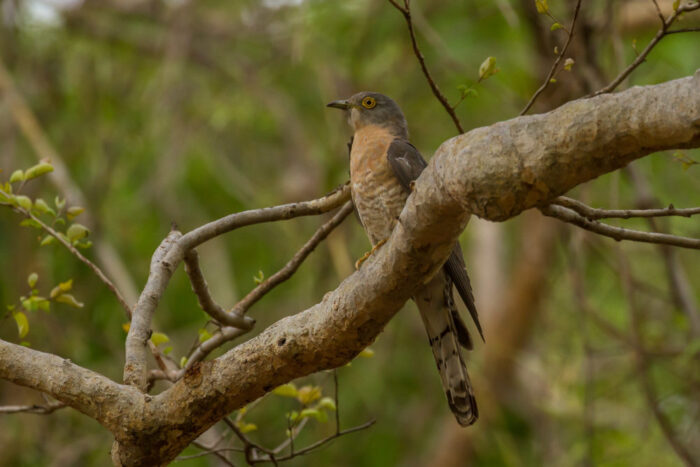
As dawn breaks and I step outside my room, another familiar call fills my ears. The whistling calls of Puff-throated Babbler (Pellorneum ruficeps) can be best remembered by memorising the mnemonic associated with it, ‘I hate you, I hate you.’ Once again, on most days this does not bother me. But when the bird selects a perch right outside my window and sings at loud decibels while I’m still in bed, I can’t help but reciprocate with my own ‘I hate you too!’ calls (in my head of course).
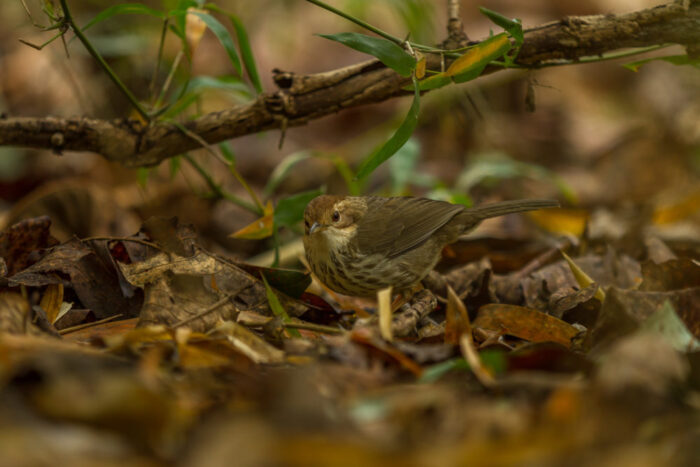
But not all bird calls can be remembered by using mnemonics. Another common singer during the early hours around my house is the Oriental Magpie-Robin (Copsychus saularis). The sparrow-sized, black and white bird can sing many melodious tunes and can, to a certain extent, mimic other birds too. Thus, assigning a mnemonic to this bird becomes difficult.
When it comes to mimicking other birds though, there is no one better than the Greater Racket-tailed Drongo (Dicrurus paradiseus) in these parts. The mimics this drongo does are extremely difficult to tell apart from the sounds of the original birds. Why this bird has this ability, no one knows for sure. One reason could be that the Greater Racket-tailed Drongo, which is often seen as a part of mixed hunting flocks (birds of various species moving together as one flock), imitates the sounds of other birds to invite them, and thus initiates the formation of mixed hunting flocks. If this was to be true, then the Greater Racket-tailed Drongo does so for selfish reasons. I have seen the Greater Racket-tailed Drongo imitate the sound of a Changeable Hawk-Eagle when it notices another bird with a morsel in its beak, only to snatch it from the alarmed bird while it’s looking for the non-existent predator.
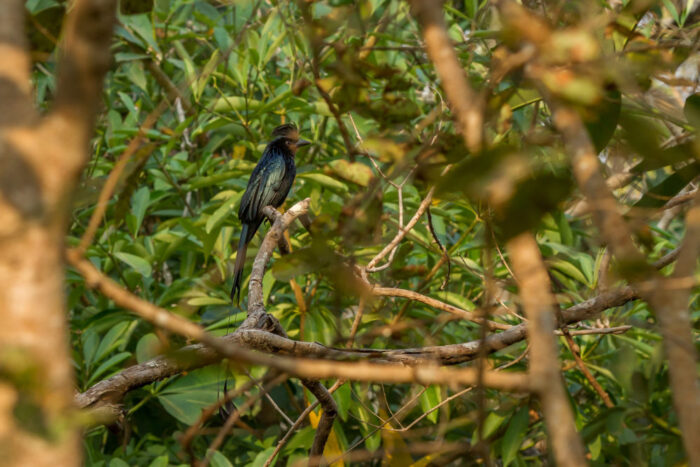
While we are talking about melodious songsters, there is no one sweeter (in my opinion) than the shy White-rumped Shama (Copsychus malabaricus) in Kanha. Come summer, males of the species adopt a bolder demeanour and from a conspicuous post sing in their melodious voices to impress a lady. To hear a White-rumped Shama sing its heart out in the wild is definitely an experience not easily forgotten.
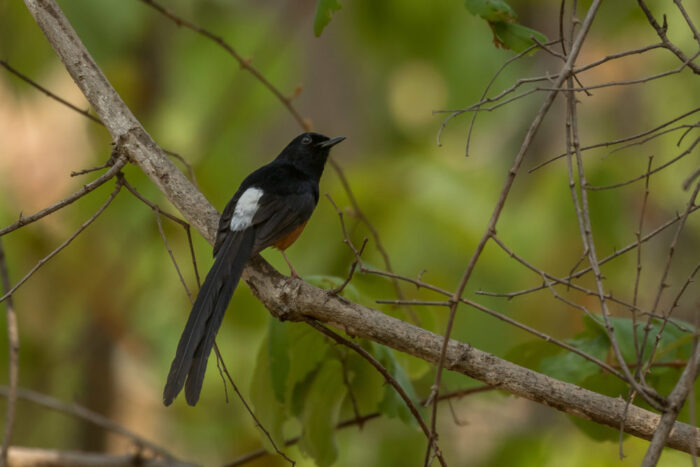
Not all birds are soothing to the ears though. On occasional afternoons when I try to enjoy a siesta, a flock of Jungle Babblers (Argya striata) has made it a point to create a ruckus with their sharp and irritating sounds right outside my window. Members in a Jungle Babbler flock continually communicate with each other vocally. Their harsh, and sometimes nasal, sounds have a purpose – they warn other members of the flock, who might be busy feeding, of any approaching danger. But one can be less bothered about the purpose for these calls when the afternoon slumber is repeatedly disturbed.
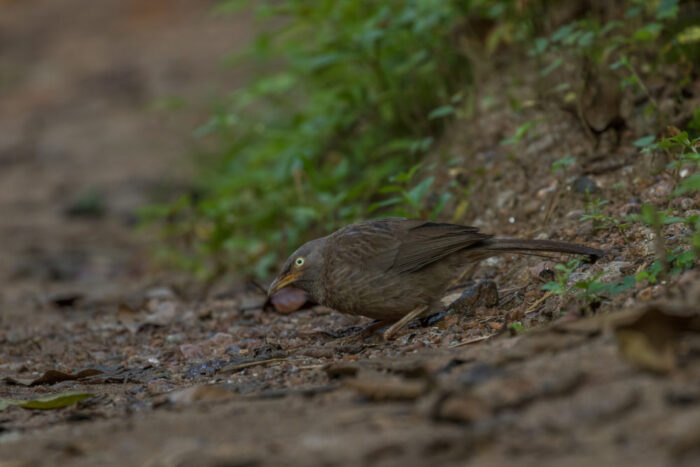
This is the time (March-April) when the resident birds in Kanha start their breeding rituals. This often involves singing to proclaim a territory, attract a mate or warn rivals. Throughout the day, one can hear several birds singing, and sometimes many of them simultaneously. It would be difficult to pick a favourite one. But one sound that I particularly look forward to listening to is that of the Indian Cuckoo (Cuculus micropterus). It can be easily identified by remembering the mnemonic ‘One more bottle!’, and in the evening, it is a suggestion that I choose not to ignore.
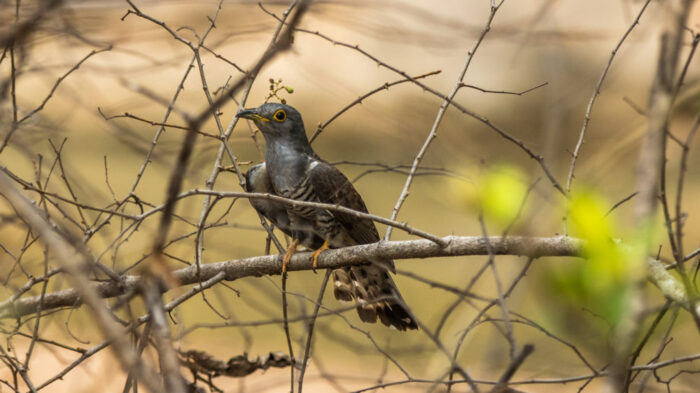
This article first appeared on https://singinawajunglelodge.wordpress.com/

xeno-canto XC547521. in this entry there is a sound in starting itself… just like frog call. could you share the name of this bird?